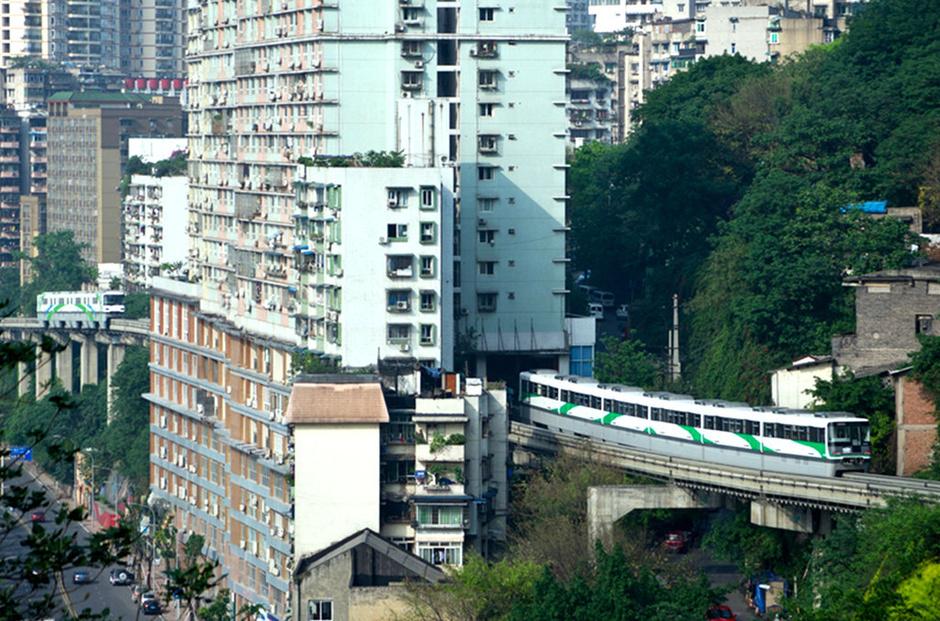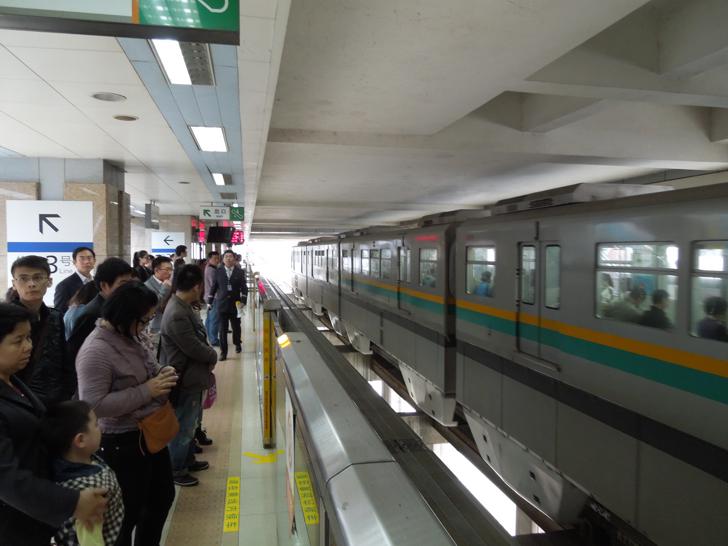The mayor's proposal to put Monorail over the sepulveda pass caught my attention. I never realized that there is a such thing as a "Heavy" Monorail. I've always thought of the small slower version like at Disney. After doing some research I found that there are Heavy rapid transit monorail systems in China and Japan that carry Heavy rail subway type capacity and are COMPLETELY grade separated. Hitachi so far is the most successful company at building Heavy Monorail Rapid Transit. Just looking at these pictures, had I not known, I would have thought this was an elevated Heavy rail rapid transit system and not monorail. Fooled me
The benefits I see are
1. quick construction (beams and pylons can be pre constructed off site; then shipped in for quick assembly, drastically cutting construction time
2. Completely grade separated
3. Same capacity as heavy rail (new technology allowing 8 car train sets)
4. 2/3rd the price of heavy subway
5. Quiet running
6. Smaller pylons would be less visually intrusive than elevated sections of our Expo and gold lines
7. Ability to go through hills and buildings easily
8. Can be completely driverless and computer automated (allowing ability to transfer Metro job to a train conductor merely there to validate payment of fare
9. Proven earthquake experience with Hitachi systems in Seismic prone Japan
Also, since giving up my car and now relying on transit, I see that if our light rail doesn't have signal priority, then it's super slow... since our heavy rail subway is underground, it's dark, dirty and cozy enough for people to sleep in stations and trains (light rail stations are sunlit and exposed=less sleep cozy). Buses have less people sleep camping out because entrance to bus is monitored by driver and payment is more likely... trains, not so much.
The best part about the expo line is the elevated sections between La Brea and Culver City which give beautiful expansive views across the city. All of these would be rectified with a heavy monorail system.









